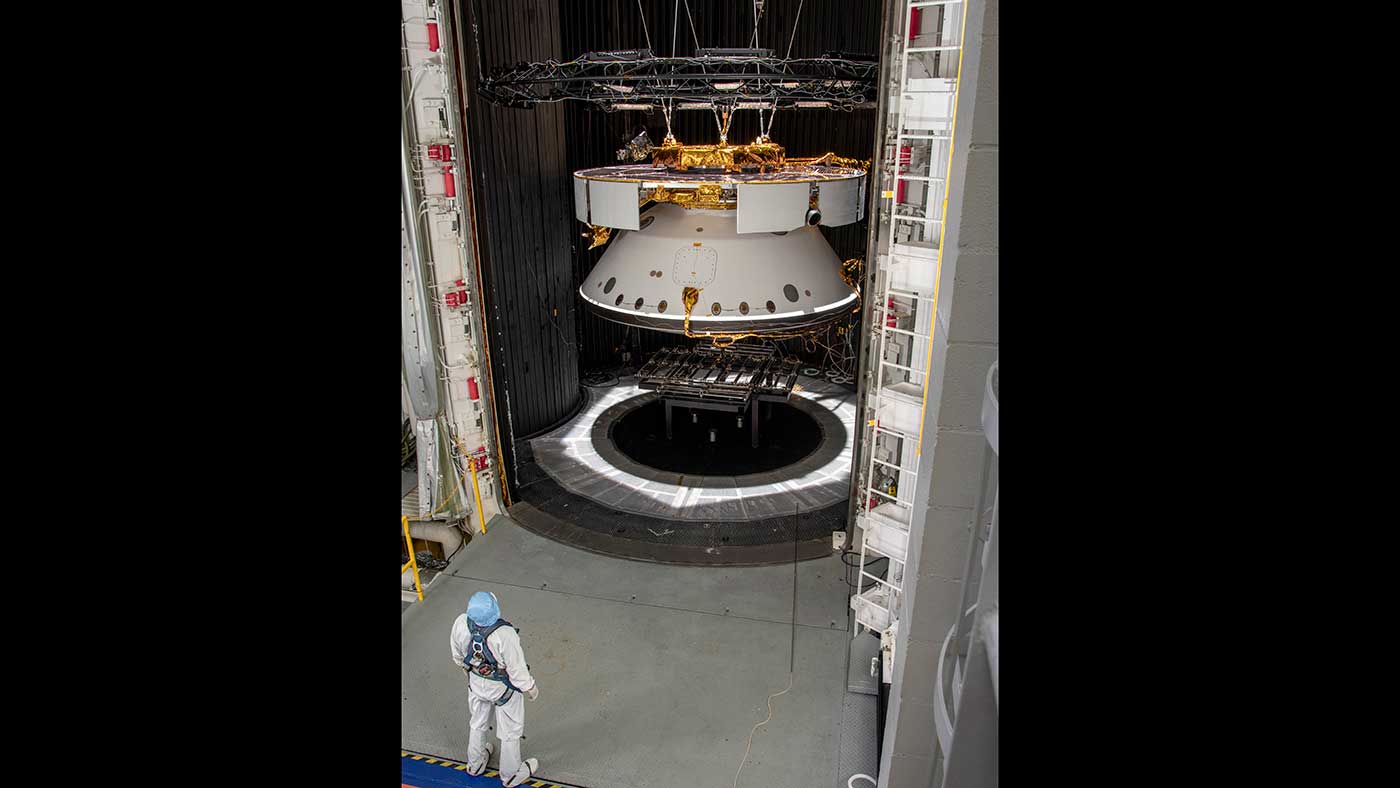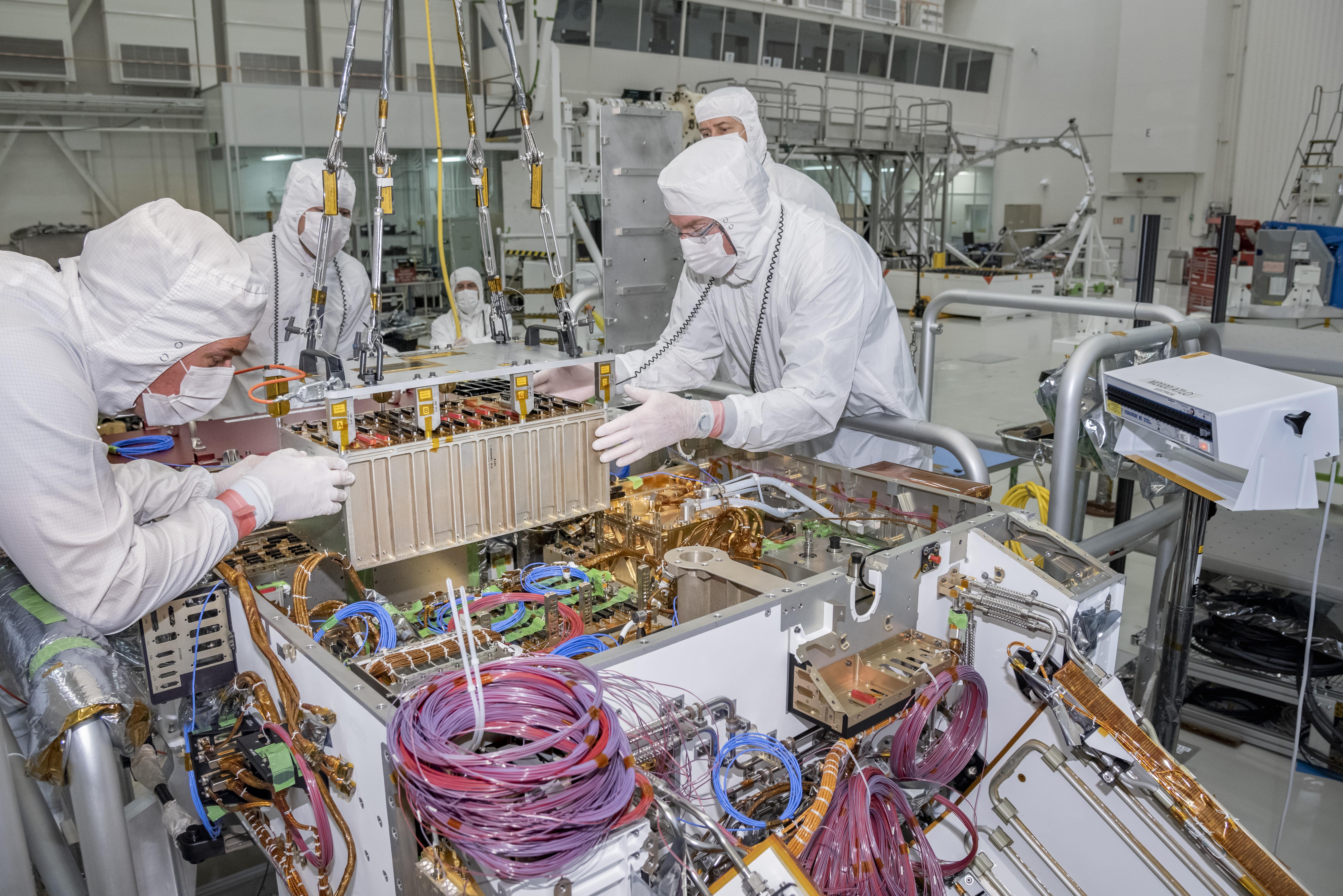NASA Puts Mars 2020 Rover's Space Ride to the Test (Photo)

NASA's next Mars rover continues to gear up for its launch toward the Red Planet next summer.
Earlier this month, engineers put the Mars 2020 rover's fully assembled spacecraft through some tests at the Space Simulator Facility at NASA's Jet Propulsion Laboratory (JPL) in Pasadena, California.
The spacecraft consists of the cruise stage, which will propel the rover on its seven-month trip through interplanetary space; the aeroshell, which will protect Mars 2020 during its dramatic dive through the Red Planet's atmosphere; and the "sky crane" descent stage, which will lower the rover onto the Martian surface on cables.
Related: NASA's Mars Rover 2020 Mission in Pictures (Gallery)
The tests were performed with a stand-in rover, because JPL engineers are still putting the real vehicle together, NASA officials said.
Mars 2020 is based heavily on NASA's Curiosity rover, which landed inside Mars' Gale Crater in August 2012. Curiosity's observations suggest that the Red Planet was capable of supporting life as we know it for long stretches in the distant past, and Mars 2020 will take the next step: looking for signs of ancient organisms.
The new rover is scheduled to launch in July 2020 and touch down in February 2021. Mars 2020 will explore the 28-mile-wide (45 kilometers) Jezero Crater, which harbored a river delta long ago. The six-wheeled robot will perform a variety of other science work as well, and it will collect and cache samples for eventual return to Earth (though a sample-returning mission is not yet on NASA's books).
Breaking space news, the latest updates on rocket launches, skywatching events and more!
The European-Russian ExoMars project will also launch a life-hunting rover in July 2020. That robot was recently named Rosalind Franklin, after the pioneering crystallographer who helped tease out the double-helix structure of DNA.
Mars 2020 will get a catchier moniker soon as well; NASA plans to hold a student naming competition, as the agency has done for its previous Mars rovers.
- Mars 2020: The Red Planet's Next Rover
- Amazing Mars Photos by NASA's Curiosity Rover
- Photos: Ancient Mars Lake Could Have Supported Life
Mike Wall's book about the search for alien life, "Out There" (Grand Central Publishing, 2018; illustrated by Karl Tate), is out now. Follow him on Twitter @michaeldwall. Follow us on Twitter @Spacedotcom or Facebook.

Michael Wall is a Senior Space Writer with Space.com and joined the team in 2010. He primarily covers exoplanets, spaceflight and military space, but has been known to dabble in the space art beat. His book about the search for alien life, "Out There," was published on Nov. 13, 2018. Before becoming a science writer, Michael worked as a herpetologist and wildlife biologist. He has a Ph.D. in evolutionary biology from the University of Sydney, Australia, a bachelor's degree from the University of Arizona, and a graduate certificate in science writing from the University of California, Santa Cruz. To find out what his latest project is, you can follow Michael on Twitter.

